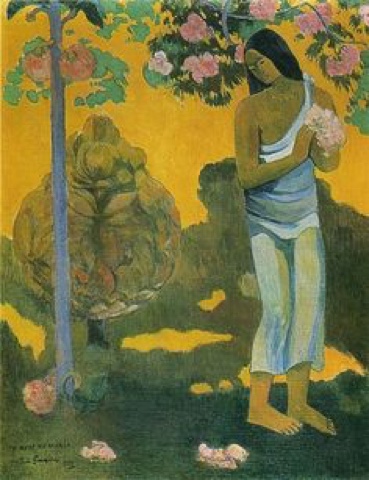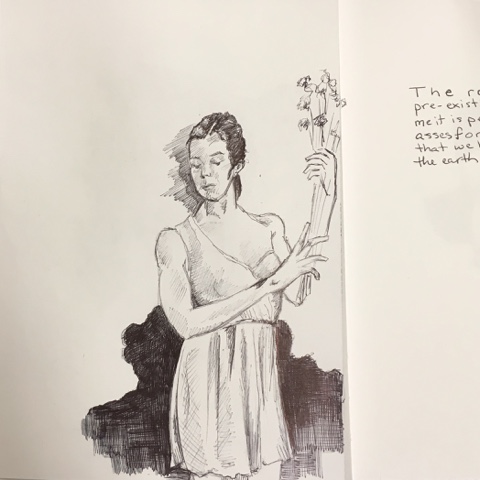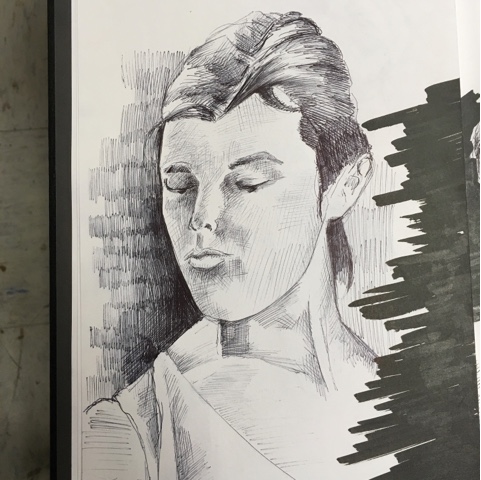As I’ve settled into my study of great master draftsman and portrait painters, searching for suitable compositions to replicate, I stumbled upon a book of Degás that I had tucked away in the studio. I believe I found the book at a rummage sale for a buck. For the better part of the past 15 years I have collected art books but it wasn’t until I was through with graduate school that I really started to read them. I suppose my patience just hadn’t arrived yet. But I digress, there were two anecdotes that I wanted to share from Degás’ history.
The man was a bachelor, but he delighted in the movement and rhythm of the human figure, studying ballet dancers, opera singers, and horse jockeys. He studied from class Greek and Italian works, venturing to Italy several times. His aim was to be as immediate as the impressionists who worked outdoors trying to capture precious moments of lighting while drawing the figure with an understanding of classic anatomy and drawing. It is said that many women desired that they have their portraits done, to which he would respond, “I would love to paint your portrait, but would probably dress you in the hate and apron of the servants.”
I adore this mindset. The expectations of people seeking portraits is often counter to the dialogue that is painting. One can make an accurate portrait but have achieved nothing in the sense of emotive paint. I’ve had a good deal of struggle with this with people who have wanted to model for me in the past. I am just not seeking the same thing in the portrait that they are.
The second tidbit from Degás that I was looking to share was to the point of his funeral. He was said to have suggested, “If there has to be [a duneral], you, [Forain], get up and say, He greatly loved drawing. And so do I.” There is something so cavalier and charming I. This statement. As a person who struggles feeling love for one person greater than the love I have for many, and who certainly feels more passion for the act of drawing than I do for any person(other than my son) this is music to my ears. I feel, suddenly, less alone. So hears to you Edgar Degás. You were a champion drawer and a true inspiration of a life.
Here are a couple more drawings that I have put together in preparing my homage to Gauguin’s “Woman Carrying Flowers,” from 1889.
I am very excited for this piece. My model seems to breathe a similar life into the pose which Gauguin’s model also did. My line work is getting a little softer and a little more confident. The process seems like it is more akin to the lifestyle that I’d like to maintain. I saw a Kurt Vonnegut quote online yesterday, “We are what we pretend to be, so we must be careful about what we pretend to be.” I’m going to pretend to be as great as Gauguin and Degás.
Peace
-Mike


